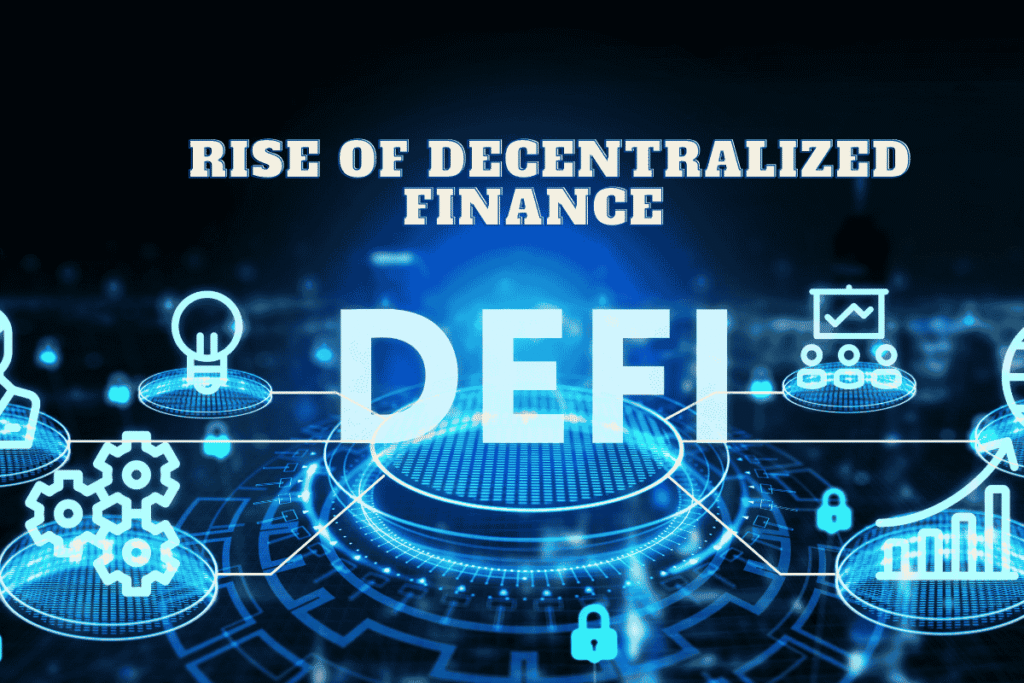Hello miners! What are the future events in cryptocurrency, and how can you get involved ahead of others?
Cryptocurrency began as a small experiment but has evolved into something that is transforming banking, investing, and national economies worldwide. As of 2025, it’s evident that digital assets will play a key role in the future. Yet, since the field keeps evolving, it’s essential to learn about the latest trends, especially for those still entering cryptocurrency.
In this blog, we will examine the key events driving the future of cryptocurrency. If you’re hoping to learn about crypto or thinking of investing, this guide will show you the way forward.
Let’s Dive in!
Table of Contents
Exploring Cryptocurrency and Current Places

Before we delve into the future of cryptocurrency, it’s crucial to grasp its fundamentals. Cryptocurrency, at its core, is a digital currency that operates independently of banks and is recorded using blockchain technology. Its decentralized nature allows for transparency, heightened security, and often, anonymity, distinguishing it from traditional government-issued money.
While Bitcoin made the initial breakthrough, the world of cryptocurrencies has since expanded significantly. Today, there are thousands of cryptocurrencies, each with its unique features, networks, and selling points.
The landscape now includes Ethereum’s smart contracts, Solana’s rapid system, and stablecoins pegged to fiat currencies, demonstrating the diverse and evolving nature of the market.
Development in Workplaces to Increase
Lately, there has been a noticeable increase in how institutions view cryptocurrency. We can now find BlackRock, Fidelity, and Goldman Sachs in the cryptocurrency space, and many companies are including digital assets in their portfolios. Now that cryptocurrency ETFs have been approved in several countries for Bitcoin and Ethereum, the use of these funds by institutions is expected to rise.
This trend benefits those new to cryptocurrency because it adds more credibility and reliability and makes getting started in crypto easier. With more substantial capital coming into the market, it could mean less volatility and the opportunity for everyone to use new financial products.
Being Clear About Rules Will Have a Positive Impact
A significant problem in the crypto market is that the rules are unclear. This area is rapidly shifting. Governments worldwide are making plans to control cryptocurrency activities, such as by enforcing regulations on anti-money laundering and stablecoins.
- The GENIUS Act is one proposal in the United States that wants to help stabilize stablecoins and increase their transparency. MiCA in Europe is leading the way in crypto regulation around the world.
This is especially important for those who are starting to program. When a platform is regulated, it can remove fraudulent activity and let people get justice if they are cheated. Still, it could lead to privacy problems and might cause some tokens to vanish. That’s why knowing what is happening is essential.
Growing Interest in Stablecoins and Central Bank Digital Currencies (CBDCs)
Stablecoins: A Bridge Between Crypto and Fiat
Stablecoins, which are connected to traditional currencies such as the US Dollar, are becoming more popular because they retain what crypto offers and are stable. Many people use them for trading, moving money, and new types of financial services called DeFi.
CBDCs: Digital Money from Governments
At present, a variety of countries are either exploring or starting to introduce Central Bank Digital Currencies (CBDCs). CBDCs are overseen by the government, unlike decentralized cryptocurrencies, and might promote easier and cheaper payments as well as help more people get involved financially.
Why Beginners Should Understand Both
It’s crucial for beginners to be aware of what both concepts mean. While stablecoins are currently used for trading and saving money, CBDCs may in the future become an everyday part of paying and banking.
The Rise of Decentralized Finance (DeFi)

What DeFi Offers
By DeFi, we mean financial services provided by blockchain tools that cut out the need for central banks or intermediaries. Now, you can use lending, borrowing, yield farming, and trading services on Aave, Uniswap, and Compound, which are decentralized platforms.
Why It Matters
This change is shaping one of the most essential parts of cryptocurrency’s future. Thanks to DeFi, those with internet can use financial services, making a big difference to people living in places where banks are not common.
Caution for New Users
One reason DeFi has high risk is because of its price fluctuations and potential flaws in smart contracts, but it can change global financial systems. New users should avoid rushing and only use well-known DeFi platforms to begin.
The Fusion of Artificial Intelligence and Blockchain
AI’s Growing Role in Crypto
AI is making a difference in every industry, including cryptocurrency. With its help, we can perform algorithmic trading by using trading bots and check blockchain data with analytics.
See and stop fraudulent operations.
Maximize the returns in your crypto investments.
Precisely determine how the market will go
Automate trading strategies
Stronger Together: AI + Blockchain
Closer partnerships between blockchain and AI are appearing, enabling the building of decentralized data systems and safe applications for AI. If you are new to crypto, realizing the connection between these technologies can help you get ahead..
Proof of Stake and the Push for Environmental Sustainability
The Environmental Debate
Some people argue that cryptocurrency, particularly Bitcoin, is not environmentally friendly. The energy consumption in Proof of Work (PoW) blockchains is so high that it worries some people about their sustainability.
Proof of Stake (PoS) Matters
Because of this, several are now switching to PoS, a method that uses much less energy. Ethereum adopted PoS in 2022 through “The Merge,” and quite a few newer blockchains also come as PoS networks.
A Greener Future for Crypto
Investors who care about the environment could look for PoS projects or support systems that get their energy from green sources. Sustainability could become more critical in deciding how cryptocurrencies are measured in the years ahead.
Using Blockchain Technology
Now, through a process called tokenization, we can create digital representations of things such as real estate, stocks, or artwork on the blockchain. Similar to other cryptocurrencies, you can trade these tokens, which permits people to buy a share and makes trading easier.
Companies now exist that let people invest in tokenized versions of real estate, carbon credits, and music royalties. If you’re new to the field, this will help you buy into assets that were challenging to access or exchange.
Non-Fungible Tokens (NFTs) Have Developed
NFTs are now used for more things than digital art and are becoming the standard way to own digital items. They have found a place in:
- Modeling economies using gaming (“play-to-earn” protocols).
- Fans can purchase and spend fan tokens and earn a portion of the music’s royalties.
- Sports include (tokenized highlights and collectibles).
- Fashion and digital luxury clothing
In the years ahead, we might buy NFTs for tickets to concerts and university diplomas. Newcomers to NFTs should always confirm their authenticity and learn about NFT marketplaces before making a purchase.
Transnational Trade and Inclusion in Financial Services
With cryptocurrency, you can send money to another country fast and cheaply without involving banks. These regions mainly include places with high remittance official fees or unstable banking sectors.
- Stellar and Ripple are both aimed at foreign payments, and mainstream finance businesses are beginning to offer cryptocurrency as part of their offerings.
Those new to crypto will often discover that it is used for fast, easy payments and investments.
Features that Improve the User’s Online Safety

When people and businesses use cryptocurrencies more often, security gets a bigger focus. Wallet improvement, the rise of multi-signature accounts, and better hardware wallets are all becoming more accessible.
At the same time, using privacy coins like Monero or Zcash adds more privacy to each transaction. Though regulators sometimes view these technologies critically, they respond to people’s increasing need for privacy online.
When you are starting, prioritize your safety. Choose reliable wallets, keep your private keys secret, and read about emerging changes in cryptocurrency
Conclusion
Cryptocurrency is poised for many advancements, new ideas, and essential shifts. The area is exciting for beginners, but it can be hard to understand. Staying up-to-date with the latest regulations, trends in sustainability, artificial intelligence, and real-world use can help you make good decisions, avoid risks, and make the most of digital assets.
Cryptocurrency is not only digital currency—it’s also a movement that is shifting how we save, transfer, and make sense of value around the world. Regardless of why you’re involved in crypto, you can study the future with interest and be careful.
Would you be interested in advancing your experience with crypto?
List of Frequently Asked Questions (FAQs) below
- In the year 2025, will cryptocurrencies be a valuable investment?
While many cryptocurrencies continue to show promising growth potential, it’s essential to conduct thorough research before investing. Maintaining a balanced portfolio and staying abreast of market developments are also crucial. Remember, the key to successful investing in this volatile market is caution and knowledge.
- What is this act called, the GENIUS Act, and what change will it bring for people involved in crypto?
The GENIUS Act is a bill that underpins the U.S. government’s approach to overseeing stablecoins. The goal is to help protect consumers and clarify laws that would allow stablecoins to be embraced more often.
- What can I do to keep my crypto assets safe?
Keep your Bitcoins in secure hardware wallets, enable extra security with two-factor authentication, don’t use public Wi-Fi for trading, and never reveal your private keys. Be sure to check if the platform is real and avoid clicking on links you don’t know.
- What is the distinction between a stablecoin and a CBDC?
Most stablecoins are digital currencies that maintain a value tied to traditional or fiat currencies and are usually released by independent firms. Some Central Bank Digital Currencies (CBDCs) are straight from central banks and are recognized as legal currency in their nation.
- Is there still value to NFTs, or was the fuss simply a temporary trend?
Besides the arts, NFTs are now being used in gaming, music, and identity management. Because tokens are a form of digital property, they are becoming more critical within blockchain.

